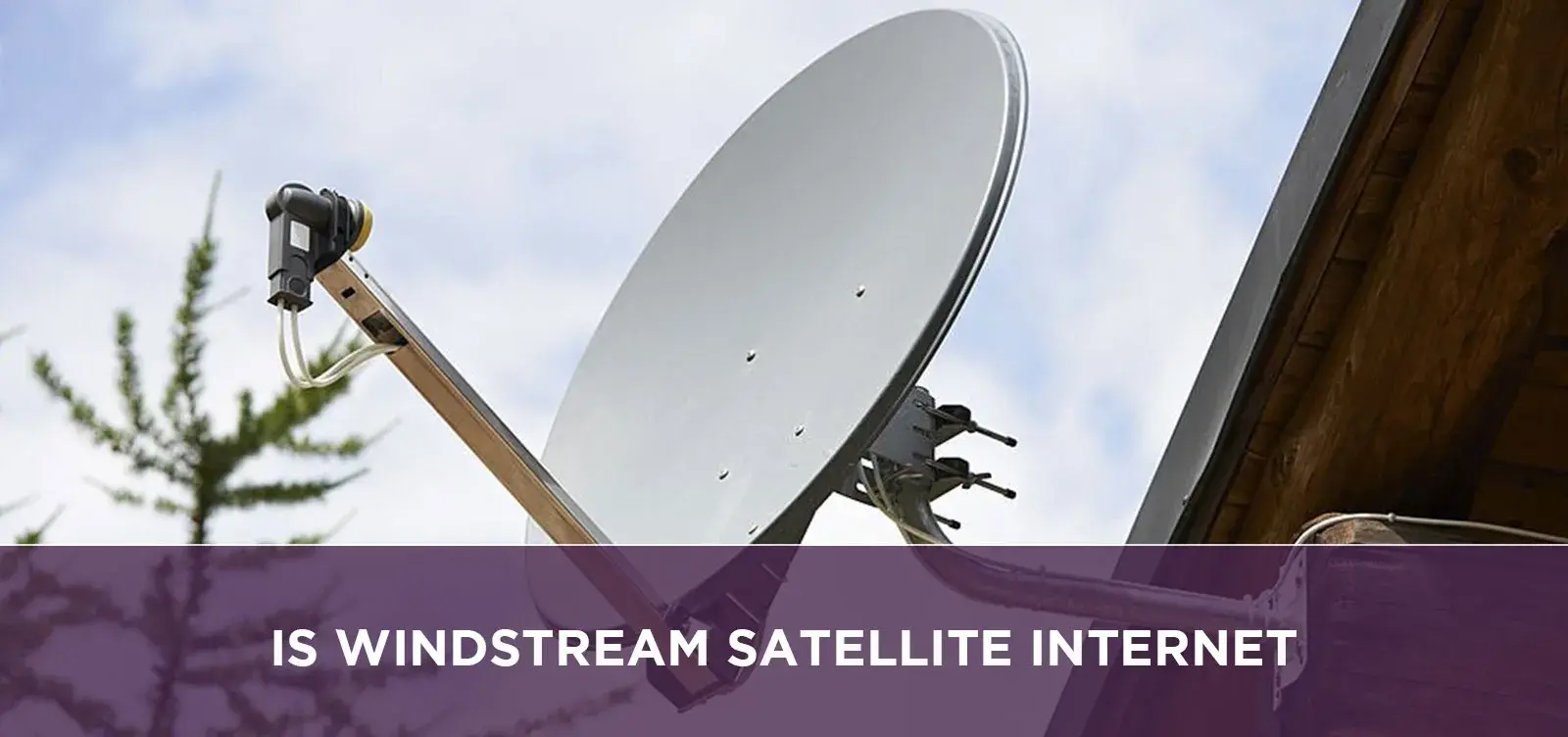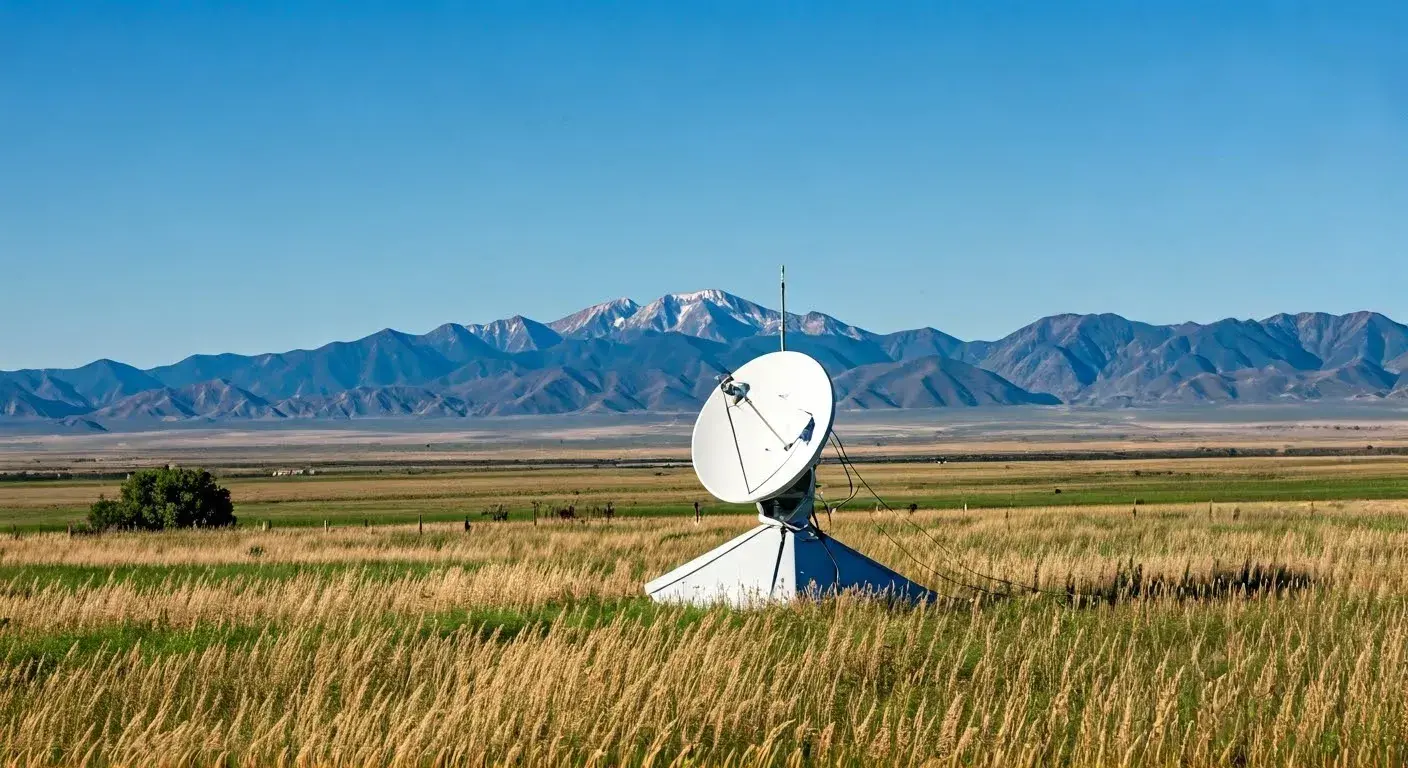-
Posted on: 11 Oct 2023

-
In an era where reliable internet is essential for work, education, and entertainment, choosing the right provider and technology is critical, especially for those in rural or underserved areas. Windstream, now operating under the Kinetic brand, is a well-known telecommunications provider offering high-speed internet services across the United States. However, a common question arises: Does Windstream offer satellite internet?
Does Windstream Offer Satellite Internet?
To address the core question: Windstream does not offer satellite internet. Kinetic by Windstream focuses exclusively on terrestrial internet services, including fiber-optic, Digital Subscriber Line (DSL), and cable internet. These services rely on physical infrastructure like fiber cables or copper telephone lines, which are not available in all locations, particularly in remote rural areas. Unlike satellite internet providers such as Starlink, Viasat, or HughesNet, Windstream does not use satellite technology to deliver internet connectivity.
This distinction is significant for consumers in areas where traditional broadband options are limited. Satellite internet is often the go-to solution for rural households due to its near-universal availability, requiring only a clear view of the sky. Since Windstream does not provide this service, those seeking satellite internet will need to explore other providers, which we’ll cover later in this guide.
Windstream’s Internet Services: A Deep Dive
While Windstream does not offer satellite internet, their Kinetic brand provides a robust portfolio of internet services tailored to various needs. Below is a detailed look at what Windstream offers:
1. Fiber Internet
-
Overview: Kinetic’s fiber-optic internet uses light signals transmitted through glass fibers, offering the fastest and most reliable connectivity.
-
Speeds: Plans range from 100 Mbps to 2 Gbps, with symmetrical upload and download speeds in many cases.
-
Benefits:
-
High Performance: Ideal for bandwidth-intensive activities like 4K/8K streaming, competitive gaming, and remote work.
-
Low Latency: Typically 5-20 ms, making it suitable for real-time applications like video conferencing.
-
Unlimited Data: All Kinetic plans come with no data caps, ensuring uninterrupted usage.
-
-
Availability: Fiber is available in select areas where Windstream has invested in infrastructure. As of 2025, Kinetic’s fiber network reaches approximately 1.6 million customer locations across 18 states.
-
Pricing: Starts at $50/month with AutoPay, with promotional offers like a $200 Kinetic Reward Prepaid Mastercard for new customers on 2 Gbps plans.
2. DSL Internet
-
Overview: DSL uses existing telephone lines to deliver internet, making it a viable option where fiber isn’t available.
-
Speeds: Ranges from 10 to 100 Mbps, depending on location and distance from the telephone exchange.
-
Benefits:
-
Affordability: Plans start at $25/month, doubling to $50 after the first year in some cases.
-
Widespread Availability: Kinetic is the 5th largest DSL provider in the U.S., serving 5,712 zip codes.
-
No Contracts: All plans are contract-free, offering flexibility.
-
-
Limitations: Speeds can vary significantly based on location, and DSL is slower than fiber or cable.
3. Cable Internet
-
Overview: In select areas, Kinetic offers cable internet via coaxial cables, similar to cable TV infrastructure.
-
Speeds: Typically 10-100 Mbps, though some areas may see higher speeds.
-
Benefits:
-
Reliability: Cable is less affected by distance than DSL, providing consistent speeds.
-
Bundling Options: Can be bundled with streaming TV services like YouTube TV or DIRECTV.
-
-
Limitations: Availability is limited compared to DSL or fiber, and speeds may not match fiber’s performance.
Checking Availability
Windstream’s services are location-dependent. To confirm availability, visit www.windstream.com and enter your address in their availability checker. You can also call 1-844-339-6334 for assistance from a Kinetic specialist.
Understanding Satellite Internet
Since Windstream does not offer satellite internet, it’s helpful to understand what satellite internet is and why it’s a popular choice for some users.
How Satellite Internet Works
Satellite internet delivers connectivity through signals transmitted between a satellite dish at your home and a satellite in orbit. The satellite communicates with a ground station connected to the internet, providing access to users. There are two main types of satellite internet:
-
Geostationary (GEO) Satellites: Orbit at 22,000 miles, used by providers like Viasat and HughesNet. They offer wide coverage but higher latency (~600 ms).
-
Low Earth Orbit (LEO) Satellites: Orbit closer to Earth (e.g., Starlink’s 5,402 satellites as of 2024), providing lower latency (~45 ms) and faster speeds.
Key Features of Satellite Internet
-
Availability: Nearly universal, requiring only a clear view of the sky.
-
Speeds: Range from 12-270 Mbps, depending on the provider and plan.
-
Latency: Higher than fiber or cable, but LEO satellites reduce this significantly.
-
Weather Impact: Can experience disruptions (rain fade) during heavy rain or snow.
-
Data Caps: Many plans have data limits, with speeds throttled after exceeding them (e.g., HughesNet’s 100-200 GB).
Why Satellite Internet Matters
Satellite internet is critical for rural and remote areas where terrestrial infrastructure is absent. It bridges the digital divide, providing connectivity for work, education, and entertainment where options like Windstream’s fiber or DSL are unavailable.
Satellite Internet Providers: Alternatives to Windstream
For those seeking satellite internet, here are the leading providers as of August 5, 2025:
1. Starlink
-
Provider: SpaceX
-
Technology: LEO satellites
-
Speeds: Up to 270 Mbps
-
Latency: ~45 ms
-
Cost: $120/month + equipment fee (~$599 for standard kit)
-
Availability: Expanding globally, with priority in rural areas
-
Why Choose It: Offers the fastest satellite speeds and lowest latency, ideal for gaming and video calls.
2. Viasat
-
Provider: Viasat
-
Technology: GEO satellites
-
Speeds: Up to 150 Mbps
-
Latency: ~600 ms
-
Cost: Starts at $49.99/month
-
Availability: Nearly nationwide, except parts of Alaska
-
Why Choose It: Affordable plans with unlimited data options (though speeds may throttle during congestion).
3. HughesNet
-
Provider: HughesNet
-
Technology: GEO satellites
-
Speeds: Up to 100 Mbps
-
Latency: ~600 ms
-
Cost: Starts at $39.99/month
-
Availability: Nationwide
-
Why Choose It: Budget-friendly with unlimited data (speeds may reduce after 100-200 GB).
Comparing Windstream and Satellite Internet
To help you decide between Windstream’s services and satellite internet, here’s a detailed comparison:
Aspect
Windstream (Kinetic)
Satellite Internet (Starlink, Viasat, HughesNet)
Technology
Fiber, DSL, Cable
Satellite (GEO or LEO)
Speeds
Fiber: 100 Mbps-2 Gbps
DSL/Cable: 10-100 MbpsStarlink: Up to 270 Mbps
Viasat: Up to 150 Mbps
HughesNet: Up to 100 MbpsLatency
Fiber: 5-20 ms
DSL/Cable: 20-50 msStarlink: ~45 ms
Viasat/HughesNet: ~600 msReliability
High, weather-independent
Affected by weather (rain fade)
Availability
Limited to 18 states, 5,712 zip codes
Nearly universal (clear sky required)
Cost
Fiber: $50-$100/month
DSL: $25-$50/monthStarlink: $120/month
Viasat: $50-$150/month
HughesNet: $40-$100/monthData Caps
Unlimited
Varies (Starlink: Unlimited with throttling; Viasat/HughesNet: 100-200 GB)
Best For
Urban/suburban areas with infrastructure
Rural/remote areas without other options
Key Insights
-
Performance: Windstream’s fiber internet outperforms satellite in speed and latency, making it ideal for urban or suburban users. DSL and cable are comparable to satellite but may be slower in some areas.
-
Availability: Satellite internet is the only option in areas without Windstream’s infrastructure.
-
Cost: Windstream’s DSL plans are often cheaper than satellite, but fiber plans may be comparable to high-end satellite plans like Starlink.
-
Reliability: Windstream’s terrestrial services are less affected by weather, while satellite internet can face disruptions.
Why Choose Windstream Over Satellite Internet?
If Windstream’s services are available in your area, they may be preferable for several reasons:
-
Faster Speeds: Fiber plans offer up to 2 Gbps, far exceeding satellite speeds.
-
Lower Latency: Essential for real-time applications like gaming or video calls.
-
No Weather Disruptions: Unlike satellite, Windstream’s services are not affected by rain or snow.
-
No Data Caps: All Kinetic plans offer unlimited data, unlike many satellite plans with throttling.
However, if you’re in a rural area without Windstream coverage, satellite internet is likely your best option.
How to Choose the Right Internet Service
To decide between Windstream and satellite internet:
-
Check Availability: Use Windstream’s availability checker at www.windstream.com or call 1-844-339-6334. For satellite, check Starlink (www.starlink.com), Viasat (www.viasat.com), or HughesNet (www.hughesnet.com).
-
Assess Needs: Consider your speed requirements, latency sensitivity, and budget. Fiber is best for high-performance needs, while satellite suits remote locations.
-
Compare Costs: Factor in installation fees, equipment costs, and monthly rates. Windstream’s DSL is budget-friendly, while satellite may have higher upfront costs (e.g., Starlink’s $599 kit).
-
Evaluate Reliability: If weather is a concern, Windstream’s terrestrial services may be more reliable.
FAQs: Windstream and Satellite Internet
1. Does Windstream offer satellite internet?
No, Windstream (Kinetic) does not offer satellite internet. They provide fiber, DSL, and cable internet services.
2. What are the alternatives to Windstream for satellite internet?
Alternatives include Starlink (up to 270 Mbps, ~45 ms latency), Viasat (up to 150 Mbps), and HughesNet (up to 100 Mbps), all designed for rural areas.
3. Is Windstream’s fiber internet better than satellite internet?
Yes, fiber offers faster speeds (up to 2 Gbps), lower latency (5-20 ms), and greater reliability compared to satellite’s 45-600 ms latency and weather sensitivity.
4. Can I get high-speed internet in rural areas without satellite?
It depends on availability. Windstream’s DSL or fiber may be available in some rural areas, but satellite is often the only option in very remote locations.
5. How do I check if Windstream is available in my area?
Visit www.windstream.com and use the availability checker by entering your address, or call 1-844-339-6334.
6. What are the drawbacks of satellite internet compared to Windstream?
Satellite internet has higher latency, potential weather disruptions, and data caps or throttling on some plans. Windstream’s fiber and DSL offer lower latency and unlimited data but are limited by infrastructure availability.
7. Can I bundle internet with other services from Windstream?
Yes, Kinetic offers bundles with streaming TV services (e.g., YouTube TV, DIRECTV) and phone services, providing cost savings and convenience.
8. How does Windstream’s pricing compare to satellite providers?
Windstream’s DSL plans start at $25-$50/month, and fiber plans range from $50-$100/month. Satellite providers like Starlink ($120/month) and Viasat/HughesNet ($40-$150/month) may be comparable or more expensive, depending on the plan.
Conclusion
Windstream, under its Kinetic brand, does not offer satellite internet, focusing instead on fiber, DSL, and cable internet services. These options provide fast, reliable connectivity for urban and suburban users, with fiber plans offering speeds up to 2 Gbps and no data caps. For rural users without Windstream coverage, satellite internet providers like Starlink, Viasat, and HughesNet are excellent alternatives, offering near-universal availability. By checking availability and comparing speeds, costs, and reliability, you can choose the best internet solution for your needs. Visit www.windstream.com or contact 1-844-339-6334 to explore Kinetic’s offerings, or check satellite providers for rural connectivity options.
-





